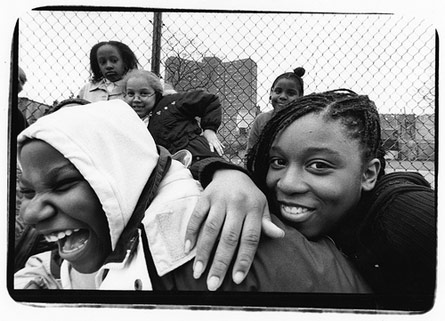
In April, Henry Talbert <http://www.nypost.com/seven/04172007/news/regionalnews/teen_blown_away_at_bklyn_eatery_regionalnews_eric_lenkowitz_and_perry_chiaramonte.htm>, a 16-year-old junior at Thomas Jefferson High School in East New York and an aspiring firefighter, was murdered. The teen was shot in the neck by another youth after an altercation outside a restaurant at around four in the afternoon.
Talbert’s death was not an isolated event. Residents of East New York and neighboring Brownsville must all too often mourn the death of young people brought down by violence. And this so-called epidemic of violence affects other parts of the city and urban communities throughout the nation. In Chicago, there have been <http://www.chicagotribune.com/news/local/southsouthwest/chi-teenshotjun27,1,2492031.story?coll=chi-newslocalssouthwest-hed>34 students shot since January.
Waddell Parks, parent coordinator at Thomas Jefferson High School, has seen too many senseless deaths and injuries. Outraged by these events, he has joined with other community members and school employees to encourage youths to confront the problem. Parks and the Parent Coordinators Coalition to Stop the Violence are developing a comprehensive program to deter youth violence in Brownsville and East New York. The program, operating in conjunction with community-based organizations, will work within the schools. The group hopes to solve the area’s problems from within, using approaches tailored to the neighborhood and developed by people who live there.
|
Conflicts and Resolutions Police in the Schools: Hanging Out and Hurting Business: Breaking the Cycle of Violence: Taking A.C.T.I.O.N. at The Point: Cutbacks After School: |
For example, Parks speaks of putting on a hip-hop revival, “returning to the early days of hip-hop, back before it got so commercial.” While the music now is widely viewed as violent, Parks and other say that, before it became so commercial, hip-hop was credited with helping to reduce violence by promoting hip-hop battles where confrontation was expressed in dance, rhyme and artwork – not with bullets. The group also hopes to create programs to encourage youth to look more critically at the way violence is portrayed in entertainment. Peer mediation sessions will offer more options for resolving conflicts peacefully.
In June, local schools participated in a march and rally to “stop the violence and increase the peace.” The event, held by the East New York Urban Youth Corps and the Parent Coordinators Coalition to Stop the Violence, and organized by community advocate Winchester Keyes, drew close to 1,000 young people and community supporters. Through speeches and a show of numbers, the event tried to make violence less acceptable and so decrease its prevalence. For many of the students who attended, the rally was a starting point.
Following the rally, a number of organizations participated in a family information fair, intended to help connect teenagers and their families to resources in the area. Many groups with important missions go largely unnoticed within the community, Parks said, and this was an effort to “bring them out into the open.”
ROOTS OF THE PROBLEM
“Violence overall is a major problem out here…it’s almost become the norm to solve any conflict,” including minor altercations, arguments, even a stare, said Parks sitting amid stacks of research and literature. “The real problem is the disrespect for black life—for black youth.”
Youth show disrespect for each other, he said, and in turn do not get respect from adults in general and the police in particular. According to local residents, the police presence here is staggering; and the complaints abound. In the latest Civilian Complaint Review Board report, the two precincts covering East New York and Brownsville, the 75th and the 73rd respectively, had the highest numbers of complaints about police in the city. Local leaders attribute this partly to the frequency of “stop-and-frisk” searches of local youth. Because of the prevalence of violence, police don’t respect the neighborhood’s young people and make assumptions, often erroneous, about their behavior. Often police stop the youth, mostly black and Latino, on the streets, and frisk and search them without cause.
“Youth, students, they’re intimidated, harassed, of course it creates hostility. They’re being bullied [by police officers]” said Parks. The stop and frisk searches have recently become the target of the New York Civil Liberties Union and will likely be a subject of upcoming litigation.
As things stand now, police do not respect the young people and the young people do not trust or respect the police and, worse, may feel threatened by them. Such an atmosphere of mutual mistrust makes it difficult to confront the very real problems of crime and violence in the area.
Parks hopes that providing youth with positive activities can change that. Instead of waiting for the teenagers to fail, he believes, community members should provide them with opportunities to excel and resources to succeed. When youth start to respect themselves and each other, Parks added, they can then step up and become the leaders their community needs to take it into the future.
Â




